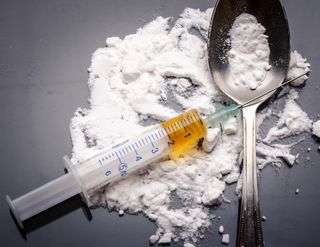Heroin Overdose Deaths Nearly Quadruple in 13 Years

In a worsening trend, deaths from heroin overdose in the United States increased even more dramatically in recent years than they did over the previous decade, according to a new report.
The results show the rate of death from heroin overdose nearly quadrupled, from 0.7 deaths per 100,000 people in the year 2000, to 2.7 deaths per 100,000 people in 2013. But the steepest rise occurred between 2010 and 2013, when the rate of death from heroin overdose increased 37 percent, compared with rising just 6 percent over the decade before, according to the report from the Centers for Disease Control and Prevention (CDC).
The researchers also reported changes in the age group and ethnic group with the highest rates of death from heroin overdoses. In 2000, the group with the highest rate of heroin overdose deaths was black adults ages 45 to 64, with a rate of 2 deaths per 100,000 yearly. In contrast, in 2013, the group with the highest death rate was white adults ages 18 to 44, with a rate of 7 deaths per 100,000, according to the report. [Never Too Late: 5 Bad Habits You Should Still Quit]
Heroin overdose deaths were more common among men than women. In 2013, there were more than 6,500 heroin-related deaths among men, compared with 1,700 heroin-related deaths among women.
Deaths from heroin overdose increased in all regions of the country, but the biggest rise was seen in the Midwest, where the heroin death rate rose 11-fold between 2000 and 2013. The death rate quadrupled in the Northeast, tripled in the South, and doubled in the West, the CDC report said.
Doctors don't know for certain the reasons why heroin deaths are increasing, but it's thought that the increase in prescription pain medication use and abuse has been a contributing factor, said Dr. Scott Krakower, assistant unit chief of psychiatry at Zucker Hillside Hospital in New York, who was not involved with the report. Some people who became addicted to prescription pain medications transitioned to heroin because it was cheaper and gave people a faster high, Krakower said.
"Because [doctors] didn't regulate prescription drugs, I think we're in a bad situation with heroin," Krakower said.
Sign up for the Live Science daily newsletter now
Get the world’s most fascinating discoveries delivered straight to your inbox.
In addition, there was previously more of a stigma against heroin use, mainly because it is a drug that is injected. But as its use became more common, the perceptions about it changed, and it is now more commonly used among people in the middle and upper middle classes, as a drug that is taken orally or intranasally, Krakower said.
The epidemic of prescription drug abuse has received increased attention in recent years. But that epidemic may actually be easier to combat than the epidemic of heroin use, Krakower said.
Doctors have fewer tools to reduce heroin use. For instance, they can't monitor people's use of the drug in the same way as they can with prescription drugs, and they can't regulate advertising as they can with alcohol, Krakower said.
But doctors can try to come up with better ways to screen for heroin use and prevent it with education, Krakower said. Increasing the number of people who are trained to administer naloxone (sometimes called by its brand name Narcan), which is a drug that can treat people who have overdosed on heroin, may also help reduce deaths from heroin overdose, he said.
There should also be more funding for mental and substance abuse clinics, which may need to be built in new areas as use of drugs like heroin becomes more widespread, Krakower said.
Doctors also have drugs they can prescribe to prevent overdose, but these are still expensive, Krakower said. Doctors need to work to make these drugs more readily available to patients, he said.
Follow Rachael Rettner @RachaelRettner. Follow Live Science @livescience, Facebook & Google+. Original article on Live Science.

Rachael is a Live Science contributor, and was a former channel editor and senior writer for Live Science between 2010 and 2022. She has a master's degree in journalism from New York University's Science, Health and Environmental Reporting Program. She also holds a B.S. in molecular biology and an M.S. in biology from the University of California, San Diego. Her work has appeared in Scienceline, The Washington Post and Scientific American.
Most Popular


